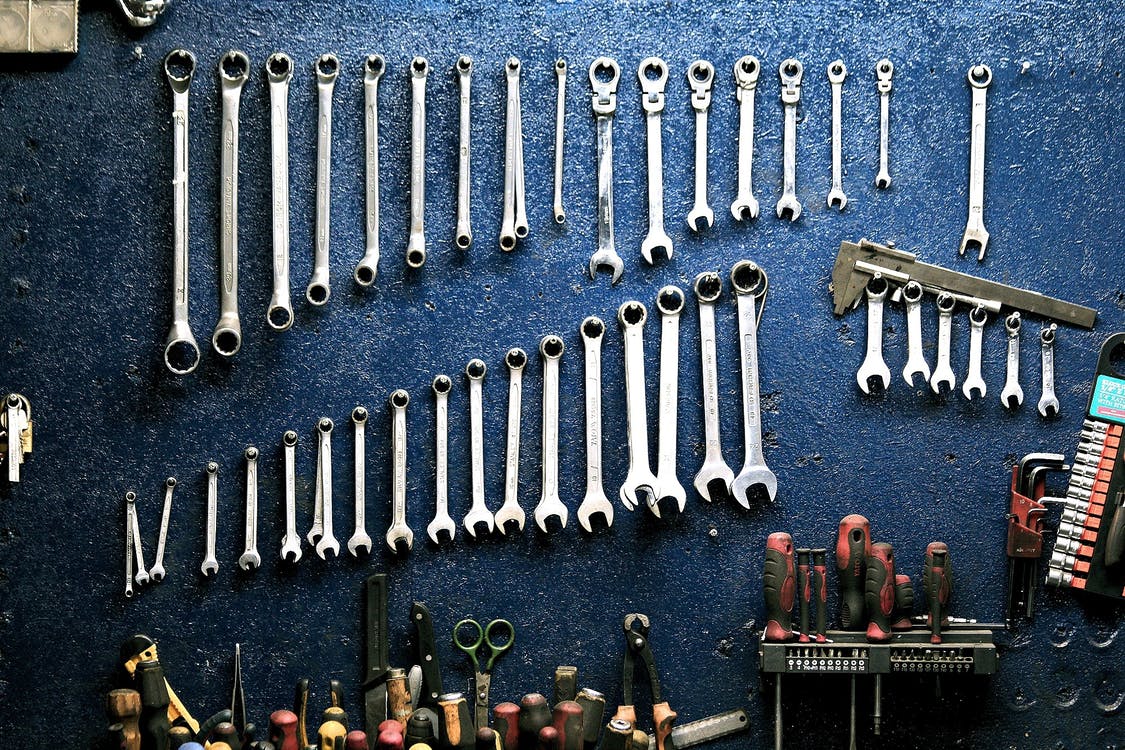 28 Nov
28 Nov How to Assemble an Oldsmobile Toolkit
- Posted by Car Guy
- 0 Comment(s)
For the DIY enthusiast, whose passion for doing the job right themselves extends to the car, having a well-equipped toolbox is a must. The hacksaw and framing hammer in your household toolkit just won’t do the trick, though. There’s a tool for every job, and we’ll go over the essentials you need to keep your Oldsmobile up to speed.
Two rules of thumb to be aware of to start out:
- If you buy cheap, you’ll buy twice. Get quality tools that will last and they will pay for themselves in time.
- No 1,000 piece toolkits. You’ll drop $2,000+ and never touch 900 of the “tools” included. “Tools” being screwdriver bits, hacksaw blades, and screws.
Onto what you want, the tools.
The Essentials
A Socket Set
A ratchet with all of socket attachments you could need will keep the nuts and bolts moving, or staying put, as you want them to. These serve the same purpose as a wrench, tightening and loosening, but oftentimes, better.
A socket wrench allows you to turn the bolt or nut without having to reposition the tool at all. Working under the hood just to take an old starter out can make it impossible to reposition a wrench to get at the bolts when you have to fight around the undercarriage below or the engine above.
Wire Cutters and Pliers
If you are installing speakers, wiring new headlights, or installing a stereo head, you need a good pair of pliers to manipulate the wires.
While not essential for the mechanical aspect of keeping your car running, it’s always helpful being able to reach into hard to get at spaces for a screw or bolt that’s just out of reach. A pair of needlenose pliers can do just that for you.
Torque Wrench
Most DIY enthusiasts see nothing wrong with screwing a bolt back on with their socket wrench and making it as tight as possible, just to be sure. This can, and often does, lead to over tightening, though. This results in stripped threads, damaged equipment, and broken bolts. You need a torque wrench.
Having a clicker torque wrench set to the appropriate torque goal, and the manufacturer’s torque value in hand will stop you from ever over tightening again.
Wrenches
While a socket set can make certain jobs much easier, sometimes there is no way to get them to reach the bolt or screw you need to work on. When this happens, a combination wrench is your only option.
Generally considered the “standard” wrench, a full set of combination wrenches in conjunction with your socket set will ensure you can reach just about any angle, no matter what the designing engineers were thinking with the engine placement.
If you are ever working with flare nuts or compression fittings, a line wrench is a must. Flare-nuts are used to create a compression fitting, but are also made from a soft material. This combination is perfect for stripping, breaking, and rounding off. A Line wrench is designed to allow the right grip without too much fidgeting to get over the nut.
Screwdrivers
Not as directly useful for mechanical repairs as a good wrench, but still an essential part of any toolbox. A complete set in all sizes will make sure you have no electronic panels you can’t get behind. Even putting a new side mirror requires a good screwdriver once you open up the panel covering the mirror control.
Having a larger flathead screwdriver can also be a lifesaver when you need a prying tool.
Worklight
You may be working in daylight, but that doesn’t mean you’ll be able to see what’s going on when under the hood, or even more so, under the entire vehicle. With winter in full blast, working in the dark is much more common, as well.
A reliable work light will keep the car lit up, and prevent you from losing small parts on the ground.
Multimeter
For when everything looks sound mechanically, but still won’t start. A multimeter is essential to check whether you have a hot wire, and if so, how much of a charge is running through it. There is no reason to be guessing at how much voltage is making it to your starter when you can just test the wire and save a headache.
Drippan
If you care about your garage floor and driveway or just need to change the oil in your car, this will catch anything leaking underneath the car. This should be one of the first investments a car DIYer gets, as you need one to change your oil without making a mess; there’s no reason to pay extra to have a mechanic watch your oil drain out.
Image courtesy of Pexels.com.
